Installing the Standard Configuration of TFS 11 from the BUILD Conference in Anaheim
I wanted to do a few posts on how to run through the various TFS install wizards of TFS 11 released at the BUILD Conference in Anaheim this week. Installation of TFS 11 is very similar to installation of TFS 2010. You can use the install guide for TFS 2010 to review the current guidelines for install. And you can find the late breaking information about this version of TFS install on the TFS setup forums.
This post covers the Standard configuration option. This is the single server installation that uses all the TFS default options. The big change here is the addition of SharePoint Foundation 2010 and its hefty hardware requirements. More on that below.
To use the standard configuration, you have to have a default instance of SQL Server and Reporting Services already installed. We install SharePoint Foundation 2010, which comes with Team Foundation Server, so you don’t have to install it yourself. But the system requirements for SharePoint are hefty enough to warrant a mention. You have to have 4 Gigabyte of RAM minimum to install. If you only have 4 Gigabytes, the installer complains that you don’t have 10 Gigabytes, but at least you can install. You also need 64 bit hardware and a Quad core CPU. Look here for all the details on SharePoint Foundation 2010 system requirements.
If you don’t have the hardware to handle the SharePoint requirements, consider using advanced or basic install options. The advanced option allows you to customize your installation experience and basic doesn’t include SharePoint. If you want help installing SQL Server for TFS, use this video I created for TFS 2010. The steps are exactly the same.
Get the preview and launch it.
Accept the license agreement and click Continue.
We recommend you enable updates. Click Install Now.
Select Standard Single Server, and then click Start Wizard.
Click Next. Ignore the the "Click here" link on this page. If you opted into the updates earlier, you’ll automatically get the latest updates during install.
Enter the account you’ll use for the report reader account (TFSReports). We use the account you enter here for both the SharePoint Farm admin account and for creating reports (TFSReports).
Click the big Install SharePoint Foundation 2010 button to launch the SharePoint installer.
The SharePoint installer dialog appears (pictured left). When it closes, the TFS wizard churns a little more (pictured right). You can tell it’s still working by the little spinning doughnut shape at the top right.
Once SharePoint is installed, you get the success screen. Click Next.
Review your selections and click Next.
After the readiness checks run, click Configure.
Once configuration completes, click Next.
You’ve succeeded! Click Close.
Note that the Configuration Center shows you have installed TFS and the TFS SharePoint extensions. During a single server install of TFS, the TFS SharePoint extensions are automatically installed. You only have to manually install the TFS extensions for SharePoint if SharePoint is on a server different from TFS.



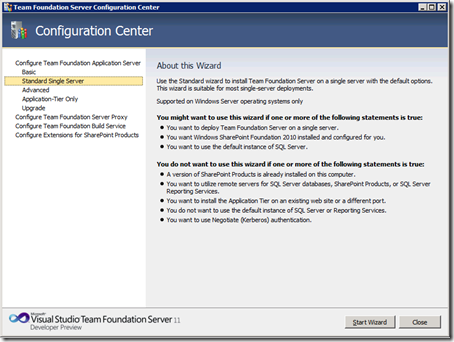
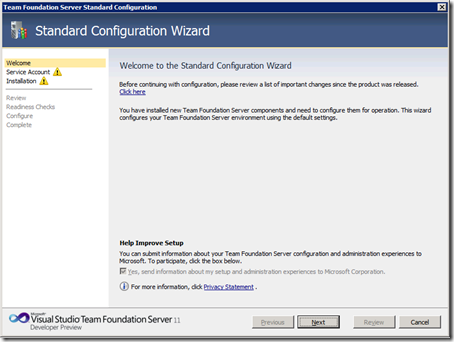

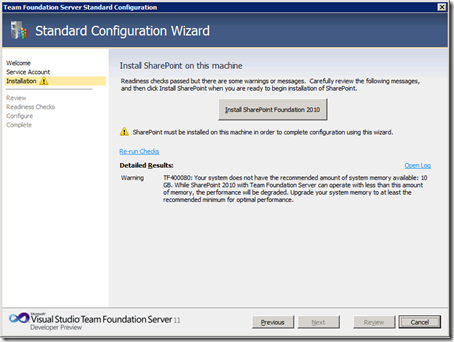



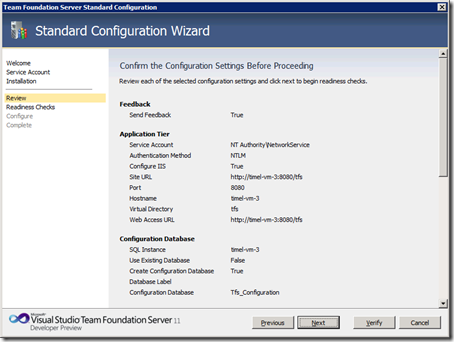

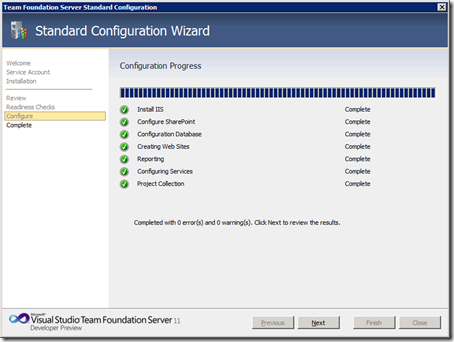


 Light
Light Dark
Dark
0 comments